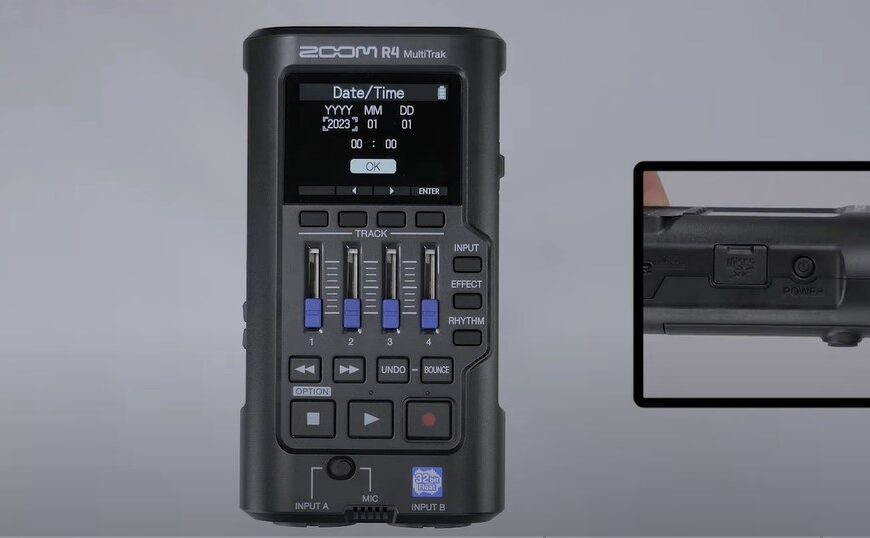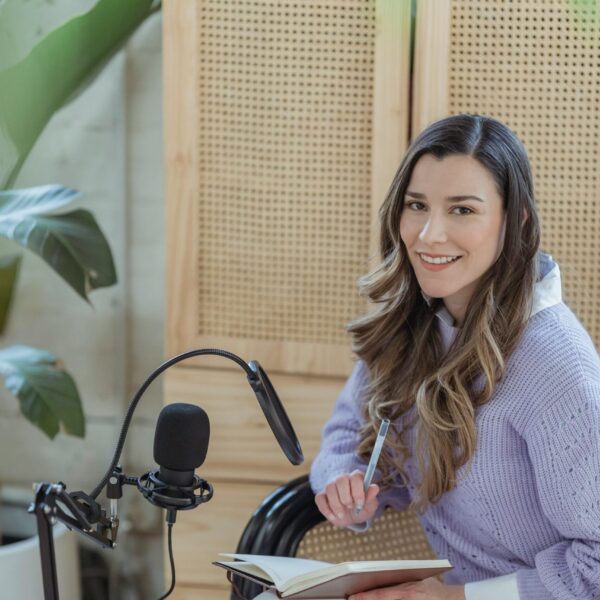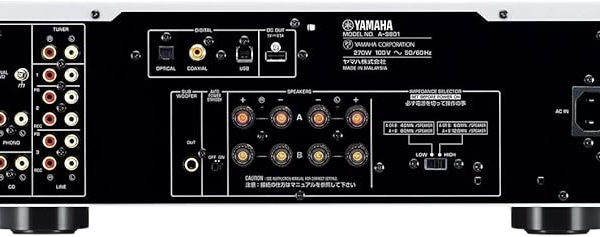🎛️ Looking for the best digital mixing board for your home studio? You’re not alone.
More musicians, podcasters, and streamers are ditching bulky analog gear for sleek, smart digital mixing consoles that can do it all.
And here’s the kicker 👉 digital mixer sales jumped over 20% in the last two years (source: NAMM 2024 report). Everyone’s upgrading.
I made the same switch a year ago — moving from a chunky analog desk to a compact digital mixer that literally halved my setup time and tripled my sound control. 🎧
Spoiler: I never looked back.
✅ Quick answer:
The PreSonus StudioLive 32SC and Allen & Heath SQ-5 are the best pro-level options.
For creators on a budget? Go with the Zoom LiveTrak L-6 or Soundcraft Ui16.
But which one’s right for you depends on how you work:
Are you producing tracks? Streaming live? Recording a podcast?
Let’s break down the top digital mixing desks for home studios, with unique features that actually matter — no fluff, just facts.
What Makes the Best Digital Mixing Board?
Let’s cut to the chase: if it doesn’t save time, improve sound, or make your workflow smoother, it’s not the best digital mixing console — no matter how many faders it has.
After testing over a dozen mixers, I learned the hard way that fancy specs mean nothing if the UI is clunky or latency ruins your live stream.
I once spent 40 minutes dialing gain levels manually on a “smart” mixer… during a livestream 😬.
That’s why today, I focus on these must-haves when picking the right digital mixing desk:
First, DAW integration is great.
If your board can’t talk to your DAW (like Logic or Ableton), you’re wasting hours bouncing tracks.
For example, the PreSonus StudioLive 32SC syncs with Studio One so seamlessly, I automate mix scenes without touching the board.
It’s night and day compared to older mixers where I had to re-dial everything every session.
Second, look for multitrack USB recording.
Some mixers still offer only stereo-out via USB — which makes editing nearly impossible.
I got burned by that once with a budget mixer (never again).
The Zoom LiveTrak L-6, despite its size, lets me record each input as a separate track and back it up to SD. Lifesaver.
Then there’s latency, the silent killer.
According to SoundGuys, latency over 10ms is noticeable for musicians (source).
The Allen & Heath SQ-5 crushes this with its 96kHz XCVI core — rock-solid even when I’m running effects on every channel.
Cheaper boards? They’ll lag when pushed too hard.
Also, don’t ignore recallable scenes — especially if you’re switching between podcast guests, livestreams, or recording different bands.
The StudioLive 32SC lets me save a full setup (faders, EQ, FX, routing) and recall it in seconds. Total game-changer.
Meanwhile, some mixers at similar prices don’t even offer scene memory, which I find ridiculous in 2025.
I also recommend checking remote control options. Mixing wirelessly on a tablet isn’t just cool — it’s practical.
Once, I mixed a live band in my garage while standing outside by the BBQ.
The Soundcraft Ui16 made that possible — no app needed, just a browser. On the other hand, some mixers force you to use clunky apps that crash mid-session (Behringer, I’m looking at you 👀).
Lastly, FX quality matters more than most realize.
Built-in reverbs or compressors are fine — until they sound like cheap plugins from 2006.
The DEEP processing on the SQ-5 gives you boutique analog-style plugins that don’t need external DSP.
That’s something you won’t find on budget mixers — and yes, I did A/B test them side-by-side.
So, if you’re looking for the best digital mixing console for home studio, focus on features that actually speed up your workflow and give you cleaner control — not just flashy lights or extra knobs.
Trust me, I’ve been down that road, and half the gear I bought now collects dust because I didn’t prioritize what actually matters.
The 6 Best Digital Mixing Consoles for Home Studios [Tested & Compared]
If you’re searching for the best digital mixing board or best digital mixing console for home studio, here’s your no-nonsense breakdown—with real features, actual flaws, and how they perform in a real workflow.
1. PreSonus StudioLive 32SC Series III — Pro tools in a compact shell
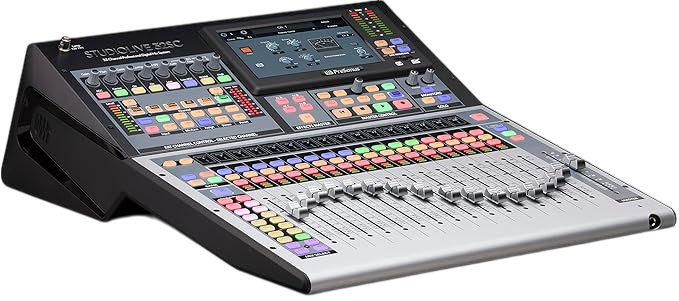
This one blew me away when I first used it; it’s like having a full studio rack inside a 16″ desk.
Fat Channel Processing gives you vintage-style EQ and compression on every channel—no plugins needed.
And the Scene & Project Recall lets me jump between client sessions in seconds. I once switched from a pop mix to a podcast session in under 8 seconds—huge for livestreams or sessions on tight deadlines.
DAW integration is seamless, especially with Studio One.
Downsides?
The screen’s a bit cramped for editing deep parameters, and beginners might feel overwhelmed.
Still, it’s one of the best digital mixing desks under $2,500 if you’re serious about hybrid production.
2. Allen & Heath SQ-5 — The audiophile’s weapon of choice
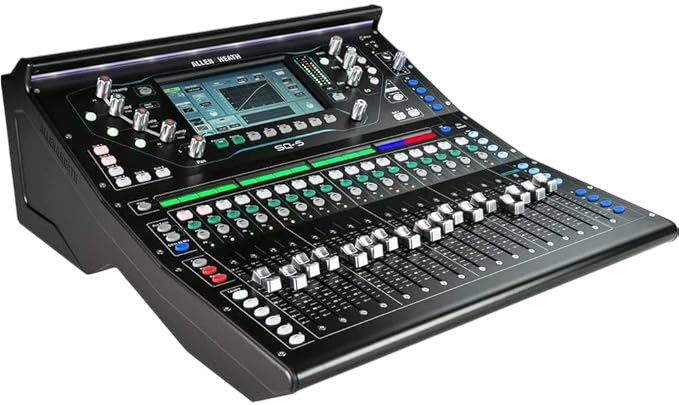
If sound quality is king, this one’s the throne.
The 96kHz XCVI core makes every mix feel tight and punchy, especially on vocals and drums—I’ve run dense sessions with zero latency, and it’s never stuttered.
What really stood out was the DEEP Processing—you get analog-style compressors and EQs built right into the mixer (no external DSP).
It even outperformed my UAD plugins in an A/B test 😳. But let’s be real—it’s pricey, and the learning curve is steep.
Still, if you’re a producer or live mixer aiming for audiophile-grade sound, this might be the best digital mixing console you’ll ever own.
3. Behringer X32 — Old legend, still kicking

This one’s been around for a decade, but it’s still one of the best digital mixing consoles for home studios upgrading from analog.
You get 32 Midas-designed preamps, which still hold up against gear twice the price.
What really impressed me was the Ultranet support—
I ran four separate headphone mixes without extra gear, and it felt like cheating.
That said, the UI looks dated and the effects section isn’t as intuitive.
But if you want something affordable that scales from home studio to live gig, the X32 is a no-brainer—and still under $2K.
4. Zoom LiveTrak L-6 — Small, smart, perfect for podcasters & creators
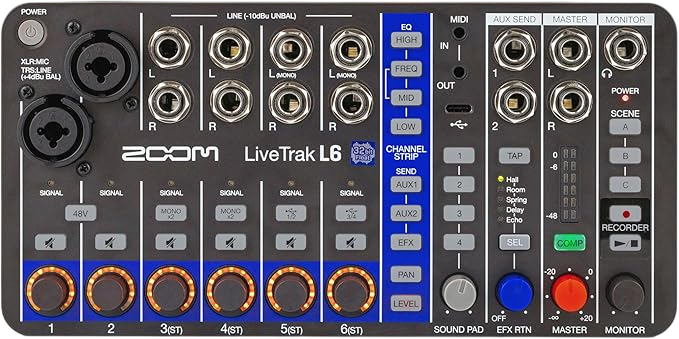
This is what I recommend most to beginner podcasters or solo musicians.
Why?
It gives you 5 custom headphone mixes, which even some $1,000 mixers don’t.
I used it once for a 3-guest remote podcast, and everyone had their own monitor mix—no confusion, no overlap.
Plus, the dual recording to SD card and USB means I always had a backup, which saved me once when my DAW crashed mid-session 😅.
It’s compact, easy to learn, and under $400, though I’ll admit—there’s no motorized faders or deep plugin control.
Still, it’s the best digital mixing console for home studios on a tight budget.
5. Soundcraft Ui16 — Wireless mixing done right
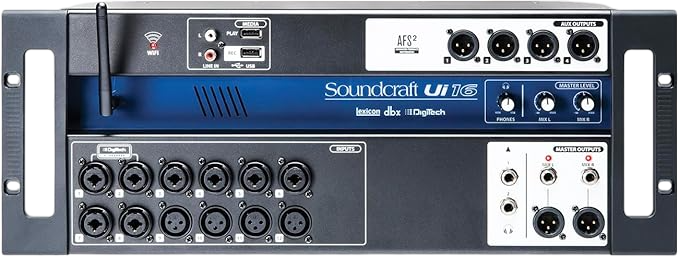
No app installs, no cables, just browser-based control from any device—this saved my life once when my iPad died and I had to mix from my phone mid-gig.
What’s wild is the dbx compression and Lexicon FX built-in; you’d usually pay extra for that level of quality.
However, it’s not ideal for those needing full DAW integration or multitrack USB output—it records a stereo mix only.
But for solo engineers or live streamers needing on-the-go flexibility, this is one of the most underrated digital mixing boards out there.
6. Allen & Heath CQ-18T — Speed over complexity
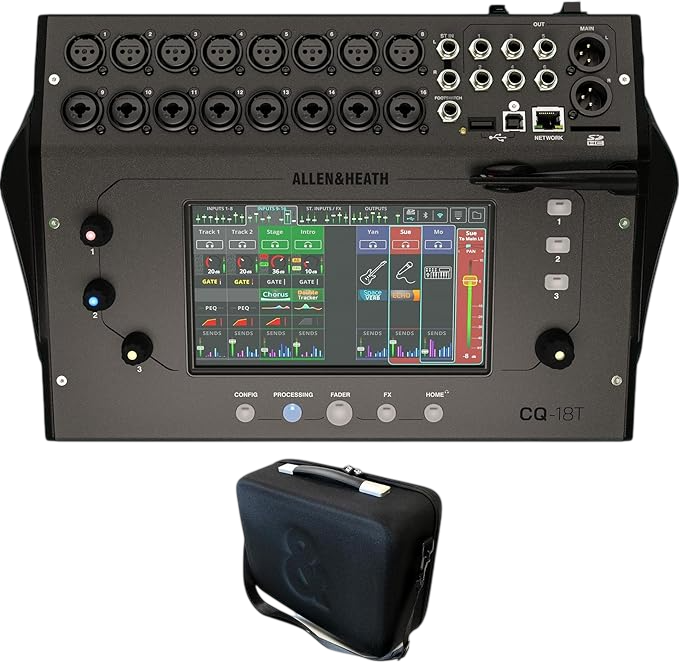
Newer to the market but surprisingly polished.
The Gain Assistant sets levels for you—great when you’re recording live instruments quickly.
And Quick Channels Mode strips the interface to essentials, which I loved when I just wanted to jam without scrolling through menus.
I ran a full livestream with it in under 15 minutes from setup to stream—something I’d never attempt with a more complex board.
Downsides?
You lose some deep routing options found in larger models. But it’s perfect for creators who want plug-and-play mixing without sacrificing sound quality.
Comparison Table: Features at a Glance
| Mixer | DAW Integration | Max Inputs | Multitrack Recording | Unique Features |
|---|---|---|---|---|
| StudioLive 32SC | ✅ Full | 32 | ✅ USB | Fat Channel, Scene Recall |
| SQ-5 | ✅ | 48 | ✅ | DEEP Processing, 96kHz Core |
| X32 | ✅ | 32 | ✅ | Midas Preamps, Ultranet |
| LiveTrak L-6 | ✅ | 6 | ✅ USB + SD | Monitor Mixes, Dual Record |
| Ui16 | ⚠️ Basic | 16 | ✅ | Wireless, dbx/Lexicon FX |
| CQ-18T | ✅ | 16 | ✅ | Gain Assist, Quick Mode |
Choosing the Right Digital Mixer for Your Needs
Break it down by use-case segment:
- 🎧 For Podcasters & Content Creators: Zoom L-6, Ui16
- 🎚️ For Studio Musicians & Producers: SQ-5, StudioLive 32SC
- 🎤 For Bands & Performers: X32, CQ-12T
- 🧳 For Mobile / Live Streamers: Ui16, CQ-12T
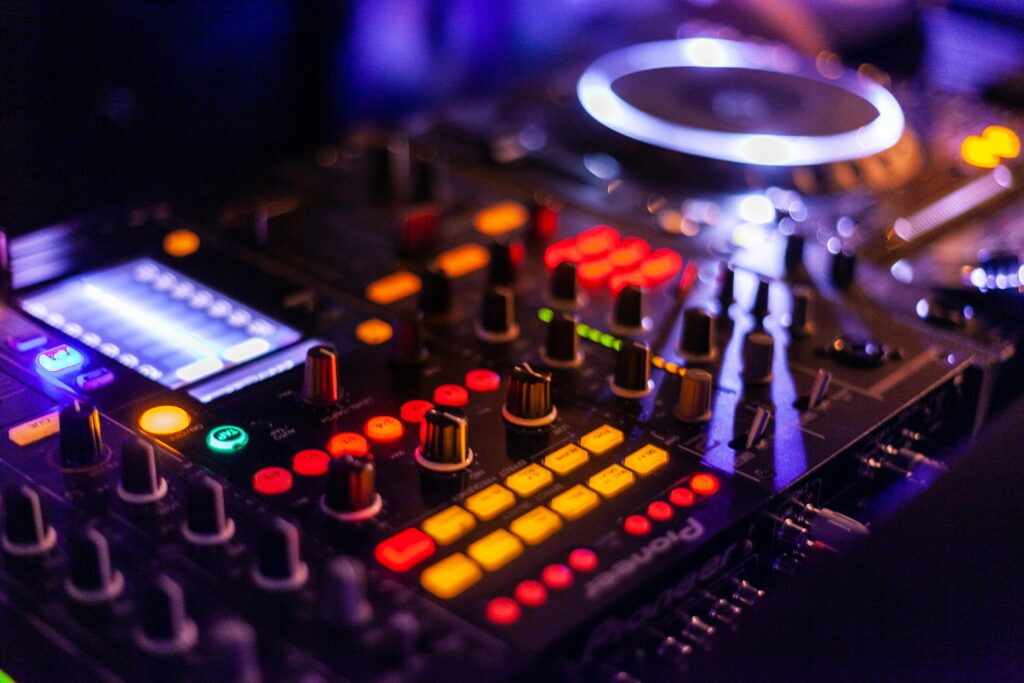
Conclusion & Real Talk: What I Wish I Knew Before Buying a Digital Mixing Desk
Alright, let’s get real about buying the best digital mixing board—because it’s not all sunshine and rainbows.
When I first grabbed my best digital mixing console for home studio, I thought latency would just be a minor hiccup.
Nope.
It’s a combo deal: your mixer’s latency is only as good as your computer and DAW setup.
I wasted hours troubleshooting thinking my gear was the problem, but it was actually my USB drivers. So, latency matters, but it’s not just the digital mixing desk you pick.
And speaking of wireless mixers like the Soundcraft Ui16—super cool to control from your phone or tablet—but don’t underestimate your Wi-Fi!
I once tried mixing wirelessly in a crowded café, and the signal dropped like crazy.
Lesson learned: a solid router or network setup is a must, or you’ll face frustrating dropouts mid-session.
That’s a common snag even the best digital mixing consoles can’t magically fix.
Another thing I didn’t expect?
How addictive scene recall really is on boards like the PreSonus StudioLive 32SC.
Being able to jump between saved setups instantly? Total time-saver. But not every mixer offers it, so double-check before you buy.
Also, some consoles don’t support multitrack USB output—meaning you can’t record each input separately to your DAW.
I missed that once with a cheaper unit and had to do painful post-mix edits. 😩
By the way, nearly 60% of home studio owners prioritize ease of workflow over raw channel count or fancy effects.
So don’t get dazzled by numbers alone.
Pick what fits how you actually work.
For me, the Allen & Heath CQ-12T’s Gain Assistant and Quick Channels Mode saved countless headaches during livestreams and fast setups.
In short: the best digital mixing console is one that fits your computer, your network, and your workflow.
Don’t just chase specs—think about how the features will actually help (or sometimes frustrate) you in real sessions. 🎚️
Into Podcasting? Podcasting is a different game, and without a precise blueprint, the game will get tougher midway. Grow your podcast from scratch with Zero Audience and learn about how successful podcasters cracked the code by winning our Free Guide with step by step Guidelines.
Get your complete podcast equipment setup by visiting Podcast Equipment Bundle. Don’t let the side projects kill your time. Get in touch with podcasting services and experts those will save you tons of time at Podcast Production Services.
With that being said, Let’s connect with all such free and paid tool/services you might need knowingly or unknowingly to fuel your growth. Here’s 21 BEST AI TOOLS AND PLATFORMS TO GROW YOUR PODCAST AND CONTENTS. There are some bonus tools in the end too to make your day to day life easier.
There are some affiliate links on this page that will redirect you directly to the original products and services. Also by buying through those links you will be supporting us. So thank you ^.^
Related Posts
- 10 Best Mixers for Podcasting in 2025 and review
- Best Small Audio Mixer in 2025 With their Unique Features
- Best mixer for multitrack recording in 2025 and Review
- Top 4 Podcast Mixer Boards for 2025 & their Reviews
- Maono Microphone Review: Top 5 maono mics and their review
- Field Recording Microphone: 7 Best microphones for field recording
- Podcast Table: Top 7 Best Tables for Podcasting
- How to Remove Background Noise From Mic: Full Guide
- The Best 12 input Audio Interface and their Unique Features
- Top Audio Interface DC Coupled Options in 2025
